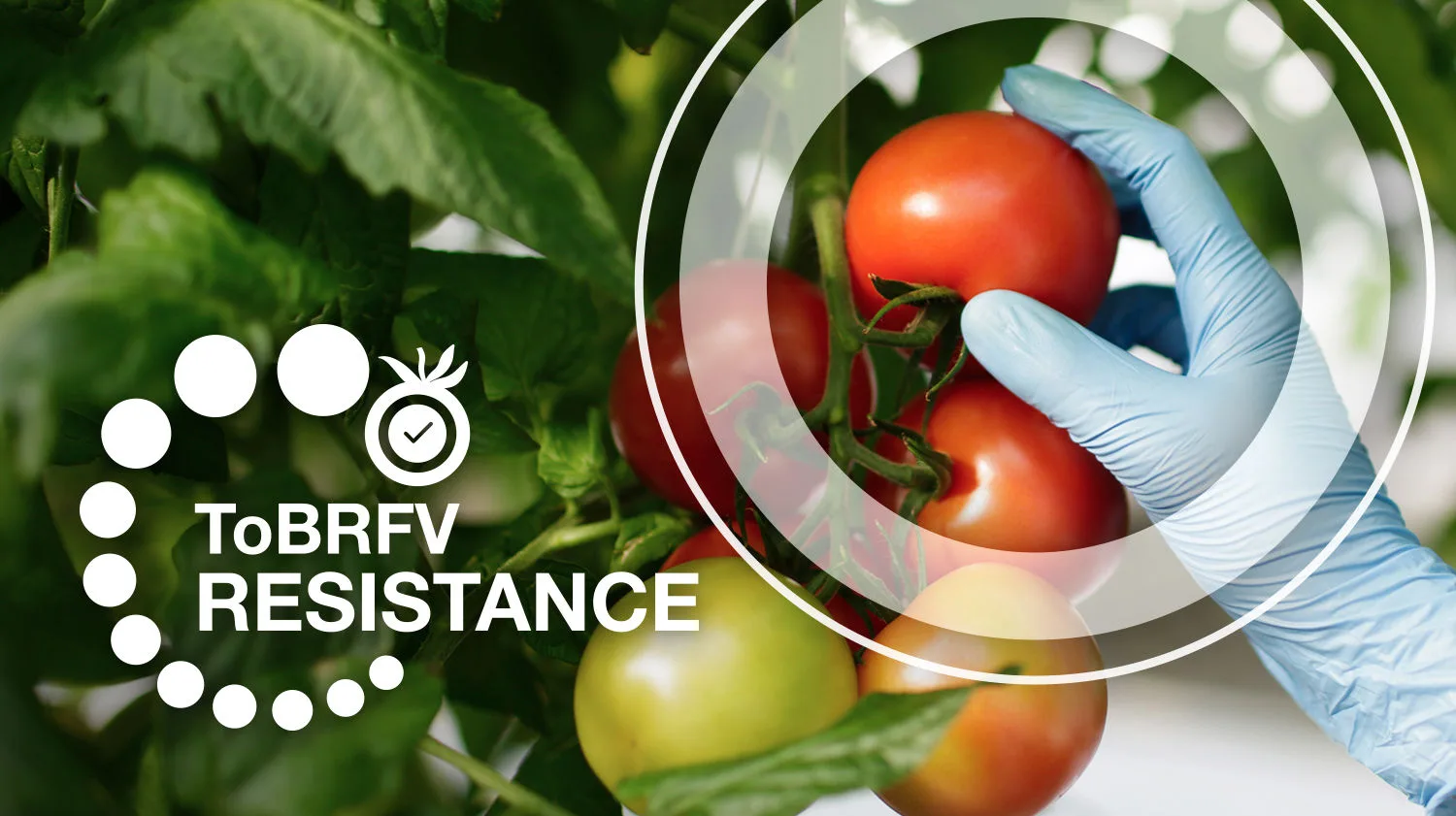
Confidence on every level – committed to delivering durable resistance
At Vegetables by Bayer, we continuously innovate for long-term solutions to challenges like ToBRFV. Because we know our growers need reliable varieties they can trust, we invest in thorough research and testing to provide quality seeds with high marketable yield potential.
We are focused on rapidly obtaining durable and high levels of ToBRFV resistance in combination with excellent agronomic performance and consumer and retail benefits. One way to achieve durable resistance is by stacking multiple resistance genes. This is a stepwise process where we expect resistance levels to increase over time.
Wageningen testing facility
Our new quarantine greenhouse in Wageningen, the Netherlands, is dedicated to testing resistance to ToBRFV in tomatoes. It will help strengthen and accelerate our search for resistant varieties.
“This new infrastructure is part of a worldwide testing footprint aimed at characterizing resistance genetics under a wide range of growing conditions and infection regimes.”

Working on durable ToBRFV resistance
Jan Barten, Strategic Project Lead, explains the work being done at our Wageningen facility to develop varieties with durable and high levels of ToBRFV resistance.
Testing single ToBRFV infection and ToBRFV in combination with PepMV
Pepino Mosaic Virus (PepMV) is present in many tomato-growing countries. This creates the possibility that tomatoes can be infected by PepMV, ToBRFV, or a combination of both.
There are potentially many combinations of infection, be it ToBRFV – PepMV or vice versa or even tri-infection with TYLCV. Through our observations and technical discussion with our customers, Vegetables by Bayer is evaluating new tomato varieties in two ways that best reflect the real life and common practices of growers: with only a single ToBRFV infection and with a controlled infection of PepMV* followed by ToBRFV infection, here described as co-infection.
*PepMV is introduced via vaccination
In these trials, ToBRFV inoculation is carried out at an early stage, some weeks after planting. Our experience is that young plants are very susceptible to ToBRFV, with the virus multiplying fast and producing visible but not extreme symptoms. There do not appear to be differences in the symptoms caused by a single ToBRFV infection or by ToBRFV infection after vaccination with PepMV. Brown spots and rings are most likely from ToBRFV.
This suggests that young plants are actively growing very quickly, so the virus also increases and reaches high levels very quickly.
No silver bullet to mitigate ToBRFV co-infection
Co-infection with aggressive viruses is a big challenge, as any uncontrolled infections will reduce yields. Growers will need to adopt and maintain a high level of hygiene practices to maximize the number of productive plants and minimize ToBRFV infections at the end of the crop cycle.




